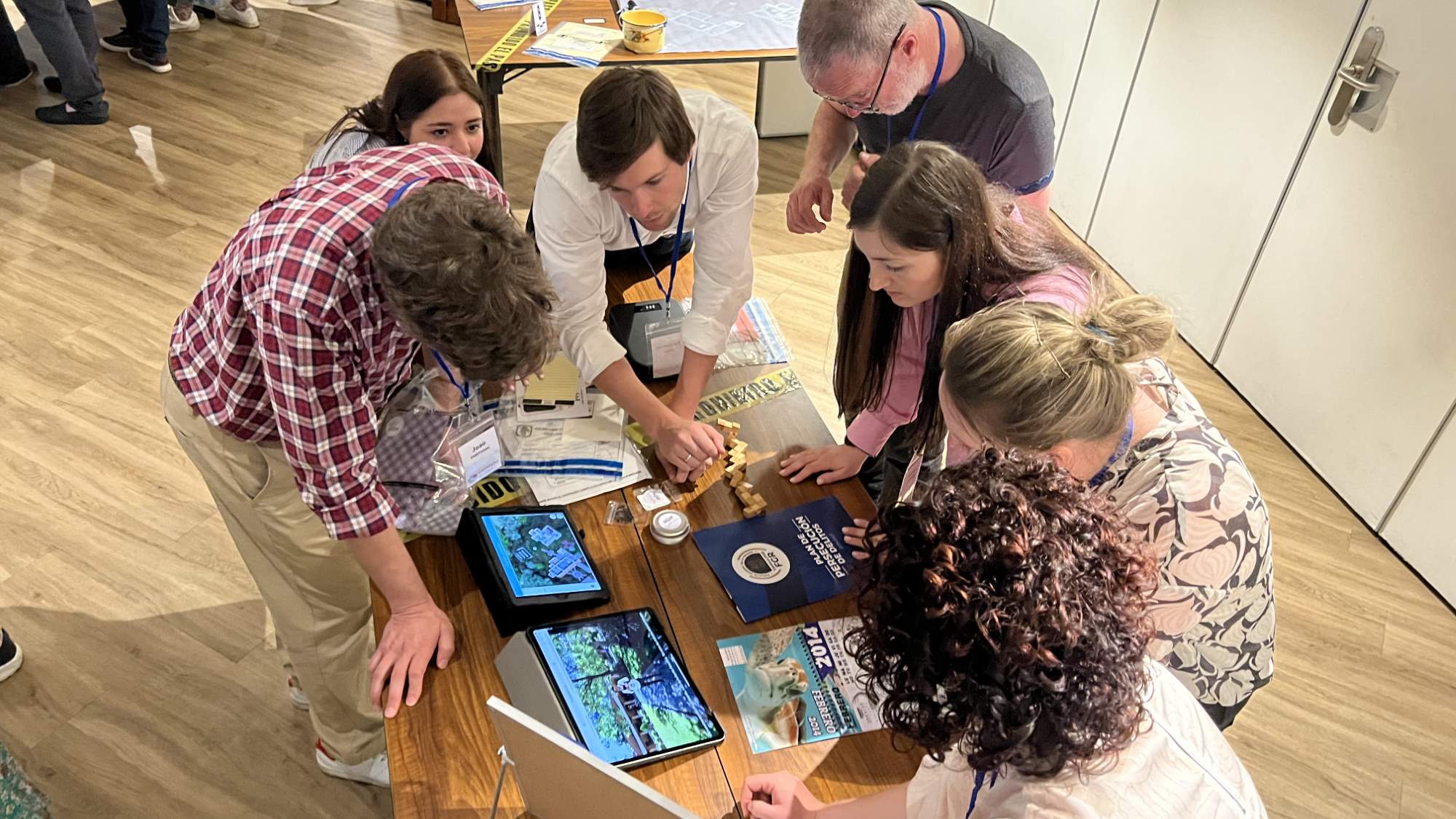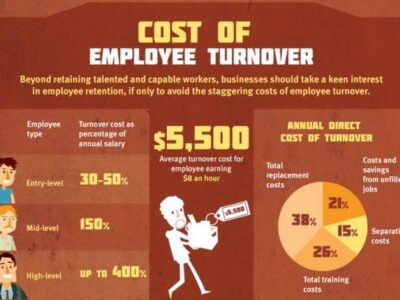Employee happiness is often overlooked in favor of short term profits, but one of the keys to long term success is ensuring that your employees are happy. Happiness in the workplace can spur innovation, inspire creativity, and drive your company to success.
But how can you keep your employees happy? What factors influence their happiness; how can you increase employee happiness; and how can you ensure you create a happy work environment? In this post, we’ll answer all these questions and more so you can have a happier, more innovative workforce.
5 Key Factors that Influence Employee Happiness
To start, let’s focus on five key factors that influence employee happiness. There are countless other factors that play a role—such as mental health, stability, and transparency/trust—but these are five of the most important ones.
1. Work-Life Balance
Work-life balance has become a popular topic in recent years, and it’s a huge factor when it comes to employee happiness. According to a Zippia report, 72% of employees said a good work-life balance is very important to them.
Employees clearly find work-life balance very important, as it allows them to enjoy their hobbies, passions, spend time with family and friends, disconnect from work, de-stress, etc. Being able to provide your employees with a healthy work-life balance is key to keeping them happy.
2. Meaningful Work
Another big influence on employee happiness is meaningful work. But what does that mean exactly? Put simply, meaningful work is work that you connect with, are interested in, can feel proud of, and makes you feel like part of a team or community. According to a Harvard Business Review study, 9 in 10 workers are willing to make less to do more meaningful work.
With meaningful work, employees understand why their work is important. They feel like they are part of something bigger, and they are genuinely interested in their work. This may not seem like much, but this sense of belonging and accomplishment can have huge impacts on employee happiness.
3. Positive Relationships
It shouldn’t be a surprise that positive relationships impact employee happiness. If your workplace is toxic, co-workers are gossipy, don’t support each other, and are overly competitive, it’s going to have a negative impact on your happiness.
Conversely, a positive workplace with positive relationships can boost your employee happiness. Employees that have positive relationships with their coworkers will support each other, work together, communicate, more effectively, and more, all leading to increased happiness.
4. Being Appreciated
This ties into some of the other factors mentioned above, but being appreciated is important enough to deserve its own section. Feeling appreciated and cared about is a huge factor when it comes to employee happiness.
Employees are people, which means that they want to feel cared about, appreciated, respected, and valued in the workplace. If they aren’t, their happiness can quickly deteriorate. But if you ensure that your employees get the recognition, appreciation, and support they deserve, they’ll be happy and ready to do the best they can.
5. Opportunities for Growth
Most employees want to keep growing, getting better and more skilled. When employees are in an environment that leaves little room growth, it can cause them to feel trapped and unhappy. But if you create an environment that encourages and creates opportunities for growth, you can help your employees better themselves while also making them happier.
5 Tips for Increasing Employee Happiness
With the factors that influence employee happiness in mind, let’s move onto tips for increasing employees happiness. Some of these tips will tie into the factors listed above, while others are separate. Either way, these tips will help you increase your employees’ happiness.
1. Encouraging Work-Life Balance
Promoting a healthy work-life balance is one of the best ways to boost employee happiness. There are a multitude of ways you can do this. Little things like encouraging breaks, regularly reviewing workloads, and offering time off for volunteering can have a huge impact on happiness.
Beyond that, there are bigger things you can try. Many companies have seen success with things like increased paid time off (PTO), focusing on productivity instead of hours, and leading by example. Most importantly though, ask your employees what they would like to see. They are the ones who need a better balance, so ask them what would help.
2. Promoting Open Communication
Open communication is something that all businesses and companies should be doing, whether or not they are focusing on employee happiness. Open communication leads to a healthier environment, better relationships, stronger teamwork skills, more trust, better feedback, and much more.
As expected, all of those things can improve employee happiness. Employees who can speak freely and openly while having their input taken seriously are going to feel happier and more comfortable in the workplace.
3. Offering Flexibility
Another great way to boost employee happiness is by offering flexibility. Our modern lives can be very busy and hectic, so providing a degree of flexibility is key. And with COVID giving lots of employees the chance to experience working from home, flexibility is valued by employees more than ever.
Remote and hybrid work can give employees a lot more flexibility. And despite the concerns from upper and middle management, remote and hybrid work have been shown to increase productivity in numerous studies, surveys, and reports.
Another way to offer flexibility is by getting creative with your PTO policy. Consider changing your policy to give employees a bit more flexibility and freedom. It can have a bigger impact on happiness than you might think.
4. Supporting Employees
Supporting employees is another way you can increase employee happiness. This can come in many forms, like providing mental health resources, checking in on them regularly, and more. Taking the time and effort to show you care about your employees is a great way to boost employee happiness.
5. Offering Opportunities for Growth
Lastly, consider offering opportunities for growth. As mentioned earlier, employees don’t want to feel trapped. They want to be in workplaces where they can grow and are encouraged to. Besides creating a better workforce, you’ll also be increasing their happiness at the same time.
Benefits of Employee Happiness
There are lots of benefits of employee happiness, for both employees and their employers. For employees, happiness makes work more enjoyable, rewarding, engaging, and interesting. For employers, it can lead to more innovation, creativity, a more productive environment, higher retention, and more. The benefits are nearly endless, so don’t underestimate the impacts happiness can have on your business. Taking the time and effort to put a focus on employee happiness is something that will pay dividends in the long run.
Employee Happiness Best Practices
Now, let’s briefly discuss employee happiness best practices. One of the key best practices is to measure and track employee happiness. That may sound hard to measure, but it’s not as bad as it seems.
You can track and measure employee happiness multiple ways. Survey and anonymous feedback are one of the more popular options. This gives employees the ability to speak freely and without fear, allowing you to get a more honest representation of employee happiness. On top of that, you can also look at metrics such as productivity, drawing connections between the two.
Arguably the most important thing though is to talk directly with your employees. Get to know them, and find out what they value most. No one knows more about how to keep your employees happy than the employees themselves, so make sure you prioritize and encourage open communication.
How to Create a Company Wide Initiative to Improve Employee Happiness
Oftentimes, the hardest part of making changes to improve employee happiness is making sure they are company wide. For larger companies especially, it can feel near impossible to get the entire company on the same page.
As with many things in business, communication is key. You need to make sure that you are communicating your changes and goals clearly and effectively to everyone in the company. You should also be ensuring that employees can speak up and get heard when it comes to their concerns, ideas, and suggestions.
You should also try to ensure that your initiatives offer something for everyone. Every employee is different, and they have different needs and desires. For example, offering a free gym membership may excite employee A, but it may do nothing for employee B. Know your employees well and try to make sure that you’re helping all of them, not just some.
Sustaining Employee Happiness with TeamBonding
Employee happiness is a key factor if you want a healthy, productive, and innovative workforce. Happy workers are more creative, motivated, and dedicated, so it’s something that leaders and managers should be prioritizing. They can do so by encouraging work-life balance, promoting open communication, offering flexibility, supporting their employees, and more.
Start supporting employee happiness with TeamBonding. We have a wide variety of activities and events that can help you boost employee happiness, all while building relationships and developing skills like teamwork, problem solving, and leadership. Contact us today to start building a happier, more productive workforce.















